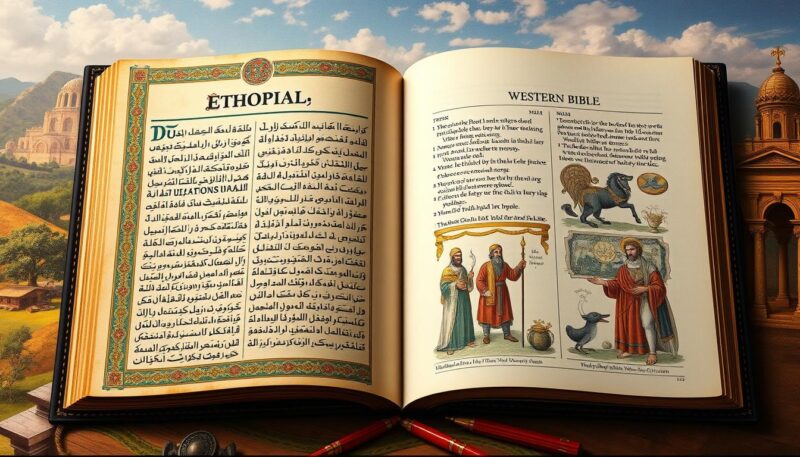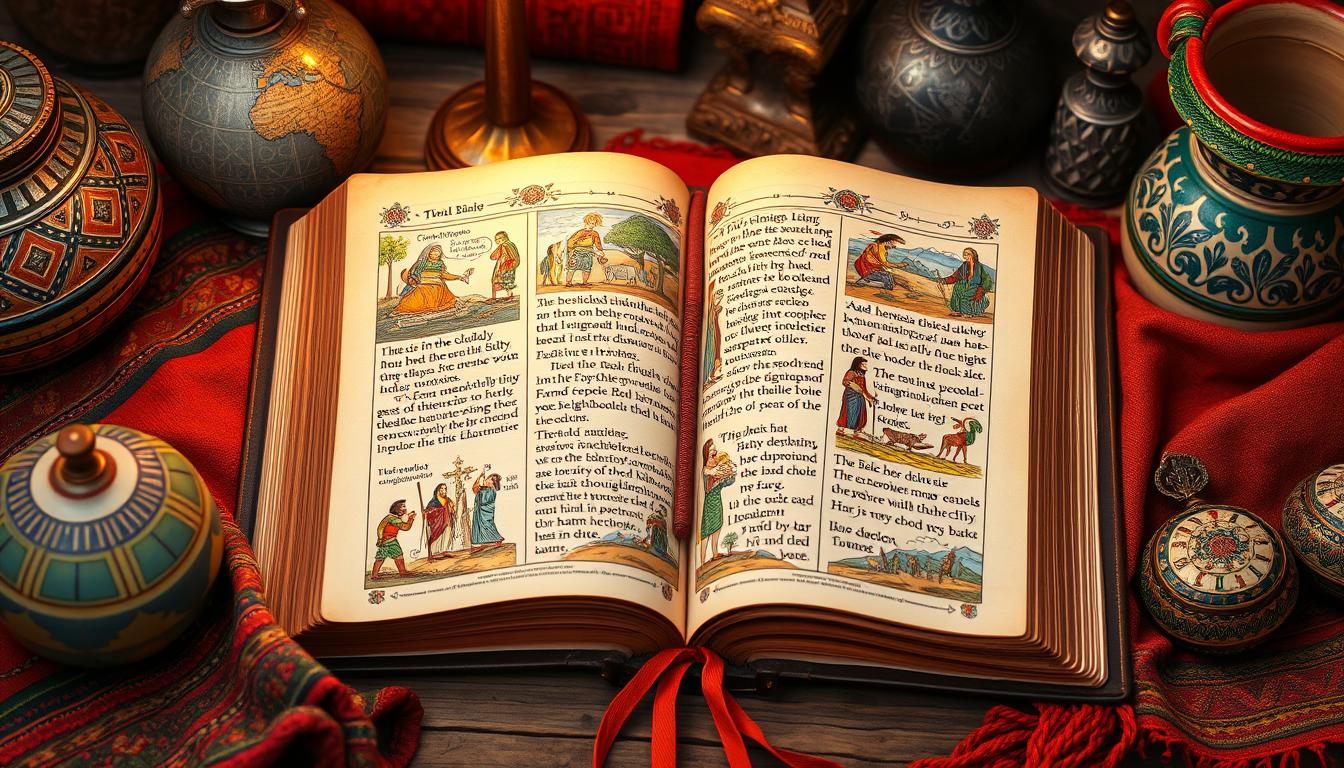The Ethiopian Bible is a remarkable testament to the rich tapestry of Christian heritage, setting itself apart as one of the oldest and most complete biblical texts available today. Housing between 81 and 88 books, this sacred scripture dwarfs the typical 66 books found in versions like the King James Bible, offering a window into the unique spiritual and cultural context of Ethiopia. You may be surprised to learn that this ancient text, believed to date back to as early as the 4th century AD, includes several ancient scriptures that have shaped early Christian thought and continue to influence a vibrant religious community in Ethiopia today. In this exploration, you will discover not only the theological implications of the Ethiopian Bible but also its historical roots, including the pivotal role of the Ethiopian Orthodox Tewahedo Church in preserving these texts.
This article aims to shed light on what makes the Ethiopian Bible remarkable, its significance in biblical history, and how it stands as a vital link to the ancient Christian narratives that have shaped Ethiopia’s identity over millennia.
The Ethiopian Bible: A Unique Christian Tradition
The Ethiopian Bible stands out as a remarkable testament to Ethiopian Christianity, deeply rooted in the country’s biblical history and cultural significance. This sacred text reflects Ethiopia’s early acceptance of Christianity, emphasizing a distinct religious identity that incorporates both Jewish influences and local customs.
Historical Context of the Ethiopian Bible
The origins of the Ethiopian Bible date back centuries, with many of its texts believed to predate other Christian scriptures. Ethiopia is recognized as one of the first nations to embrace Christianity, where historical events have shaped a unique canon. The Ethiopian Bible features a total of 81 books, with 46 in the Old Testament and 35 in the New Testament, contrasting sharply with the Protestant Bible’s 66 books. This means that the Ethiopian tradition includes 15 additional texts, many of which have significant theological implications.
The Role of the Ethiopian Orthodox Church
The Ethiopian Orthodox Church has been instrumental in preserving the Ethiopian Bible through centuries of challenge and change, maintaining a rich heritage of faith and tradition. This church safeguards various unique writings, such as the Book of Enoch and the Book of Jubilees, which are absent from Protestant and Catholic collections. The Ethiopian canon includes at least 36 books in the Old Testament, as well as 7 Deuterocanonical books, all underscoring the cultural significance of these scriptures in Ethiopian spirituality.
Written primarily in Ge’ez, the Ethiopian Bible reflects the church’s dedication to maintaining ancient texts and their meanings. The influence of these writings can be seen in the Ethiopian Orthodox Church’s liturgical practices, where teachings from the Bible play a central role in worship. This emphasis on unique theological perspectives ensures that the Ethiopian Bible not only serves as a religious document but also as a historical narrative of Ethiopian culture and beliefs.
Canonical Differences between The Ethiopian Bible and Other Versions
The Ethiopian Bible stands apart due to its expanded canon, which includes a remarkable number of unique biblical books. Unlike the King James Version (KJV), which contains 66 books, the Ethiopian Bible comprises between 81 and 88 books. This broader selection significantly influences theological discussions and understanding of Christianity.
Expanded Canon of The Ethiopian Bible
The unique biblical books found in the Ethiopian Bible, such as the Book of Enoch, the Book of Jubilees, and the three books of Maccabee, deepen the complexity of the biblical canon. These texts contribute to a tapestry of Christian thought and narrative, often omitted in other biblical translations. The inclusion of these works raises essential questions regarding biblical authenticity and scriptural legitimacy among various Christian denominations.
Theological Implications
The theological differences between the Ethiopian Bible and more widely recognized texts like the KJV extend beyond mere numbers. The presence of additional books offers richer insights into early Christian narratives, enhancing our understanding of the faith’s history. Ethiopian religious practices, art, and literature often reflect these unique theological perspectives, showcasing how diverse interpretations shape the Christian tradition.
Translation and Language Aspects
The Ge’ez language plays a crucial role in understanding the Ethiopian Bible. Though no longer spoken, Ge’ez holds significance in Ethiopian liturgical life, preserving the meaning and context of its texts. Many of the translations into modern languages may lose nuances embedded in this ancient tongue. The Ethiopian Bible, particularly the Garima Gospels, highlights the importance of language in conveying theological and historical richness.

| Feature | Ethiopian Bible | King James Version |
|---|---|---|
| Number of Books | 81 – 88 | 66 |
| Unique Biblical Books | Includes Book of Enoch, Book of Jubilees, and Maccabees | Excludes these books |
| Liturgical Language | Ge’ez | English |
| Age of Manuscripts | Approximately 800 years older | Published in 1611 |
| Historical Context | Christianity declared state religion around 4th century | Commissioned in 1604 during Reformation |
Conclusion
The Ethiopian Bible stands as a remarkable testament to Ethiopia’s rich Christian tradition, tracing its roots back to the 4th century AD. Its unique biblical structure, comprising a total of 81 books, profoundly contrasts with the 66 books typically found in most Christian denominations. The inclusion of early Christian texts like the Book of Enoch and the Book of Jubilees not only showcases the distinctiveness of the Ethiopian canon but also emphasizes the cultural significance of these additional writings in understanding biblical history.
As scholars delve deeper into the complexities of the Ethiopian Bible, the influence of the Ethiopian Orthodox Church becomes increasingly evident. This ancient community has played a crucial role in preserving and interpreting religious texts for over 1,500 years, highlighting its commitment to the faith and its theological implications. By maintaining texts that other Christian traditions may dismiss, the Ethiopian Orthodox Church opens up discussions about the foundations of Christianity and the diverse pathways it has taken throughout history.
Ultimately, the Ethiopian Bible enriches our appreciation of Christian heritage and invites you to explore the multifaceted ways in which faith can manifest. Its significance extends beyond mere textual differences; it invites a reevaluation of what constitutes sacred scripture, reaffirming the diverse approaches within the Christian faith.

